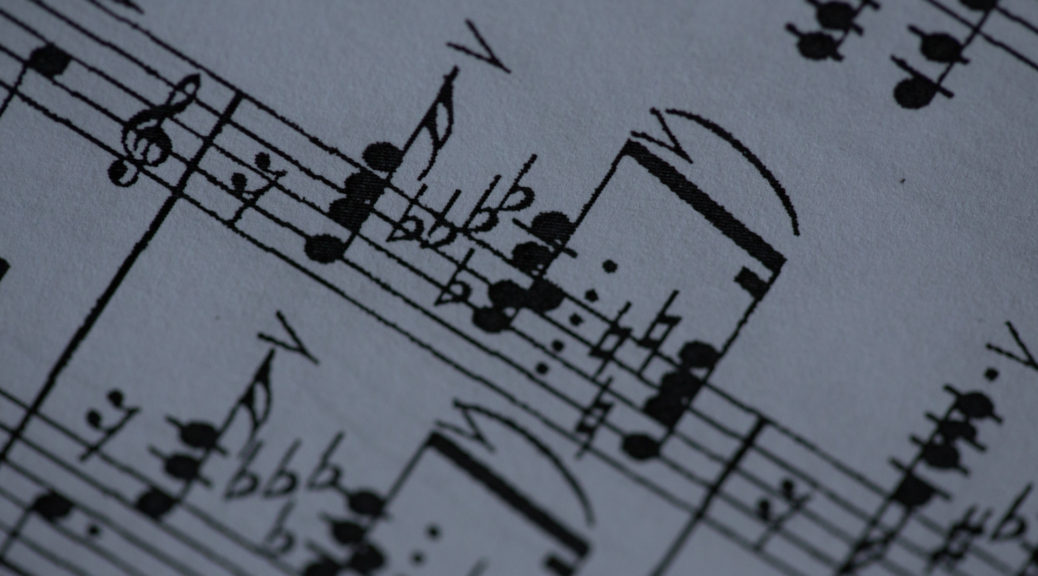Gaspard de la Nuit: Ravel’s complex, atmospheric, dark piano masterpiece. I’m learning all 22 minutes of it right now, and the music is consuming me unlike any other piece has before.
Gaspard is a moody piece, a suite of three movements nearly following the classical sonata form of fast-slow-fast, but it’s more like an artistic demonization of it. Maurice Ravel composed it in 1908 in the French impressionistic style (evoking moods and emotions rather than presenting strict melodies) with each of the three movements inspired by a poem. Ondine: a lethal nymph emerging from the water to seduce a man. Le gibet: a lone corpse swinging from the gallows in a desert sunset as a distant bell tolls. Scarbo: a mischievous goblin flitting around and dancing in the darkness.
Thus, just imagine the moods it puts me into when I’m practicing the piece or thinking about the music constantly. And Gaspard is insanely difficult to play, so I’ve spent several hundred hours frustrated as I push my fingers to their limits. I know the piece is beyond my technical level, yet I can’t help myself. The allure of the music is irresistible…

For hours at a time, usually (appropriately) late at night, I sit in the dark student lounge and practice. My brain is embedding the muscle memory for every reconfiguration of my finger joints and every vector of acceleration for my arms and wrists, but I’m focusing my thoughts on how to elicit every nuance of musicality. By striking strings with 88 felt-tipped hammers, I try to emulate temptation, or dread, or terror. It’s almost spiritual: I demonstrate my devotion to the music, and I am rewarded by moments of musical bliss. But only sometimes… Gaspard is hard!
I barely knew what I was getting into when my friends dared me to learn the sublimely difficult Ondine in late May. Yes there’s a veritable firehose of notes, but to play them with such finesse as to paint a sonic simulacrum of many textures of water is the true challenge. It has everything: quiet shimmering, rhythmic pattering, undulating swells, misty showers, thunderous cascades, splashes and ripples. Hiding in all that is a vulnerable melodic line, but somehow in its simplicity it sounds sinister. I don’t know how Ravel did it.

I thought I’d stop there, but the more I listened to Le gibet and its incessant B♭ chime, I got sucked into the deathly atmosphere. When I finally sat down, depressed the pedal, and tested the first few intricate chords, I had a moment. The way the sound from a real piano rattled through my bones… it’s incomparable to any passive listening experience. That was the moment I realized I had to play it myself. Le gibet makes me feel so uncomfortable. The entire thing is composed of a steady stream of unsettling chords with 9ths and 7ths and weird chromatic progressions everywhere and, all the while, the B♭ bell tolls on menacingly. It’s deliberately monotonous and unyielding for a solid 7 minutes, which is what makes Le gibet testingly difficult.
Then there’s freakin’ Scarbo. There’s the fable that Ravel composed Scarbo to beat Balakirev’s Islamey as the most difficult piano piece ever composed. Islamey appears harder to me (but I’ve never tried), but it’s a compilation of embellished Russian tunes and isn’t as interesting or complex as Scarbo. From the first growl to the final sudden disapparation, Scarbo is unpredictable, filled with repeated note pirouettes, cackling cadences, percussive outbursts, and twin monstrous chaotic climaxes. Scarbo uses its devilish difficulty to good effect, though honestly it’s so bizarre and inaccessible, even to a Ravel fan like me.
All in all, Gaspard explores the edge of what’s possible on a piano. Whispering pianississimos to uproarious fortississimos, rapid-fire repeated notes, white- and black-key glissandos, single-finger double-note chords, sustained dissonant cadences, accompaniment overlapping with the melody, illusions of the lowest register and adjacent octave runs, the list goes on. It demands nothing less than a grand piano in pristine condition, where sound resonates throughout all octaves, the sustain duration is long, the key repeat rate is rapid, the touch is silky and forgiving, and yet the dynamic range is colossal.
Therefore, I cannot imagine the piece on any instrument besides the piano. I can’t imagine a simplified arrangement or even a few changed notes. Leveraging all this terrifying technical complexity, Ravel composed something so utterly musically mystical. Transcendental, even. As I’m learning it, I keep on thinking: “how cool is it that one instrument can do all this?” Gaspard de la Nuit demonstrates the beauty and power of the piano, and that’s why I’m obsessed with it.
Images from sothebys.com, wikipedia.org
P.S. some trivia: Scarbo uses 86 of the 88 keys, even without glissandos. It misses only the highest A♯ and C.
P.P.S. #opoopoop (part 1)
P.P.P.S. edit 1/5 Illusory Standards (part 3)
